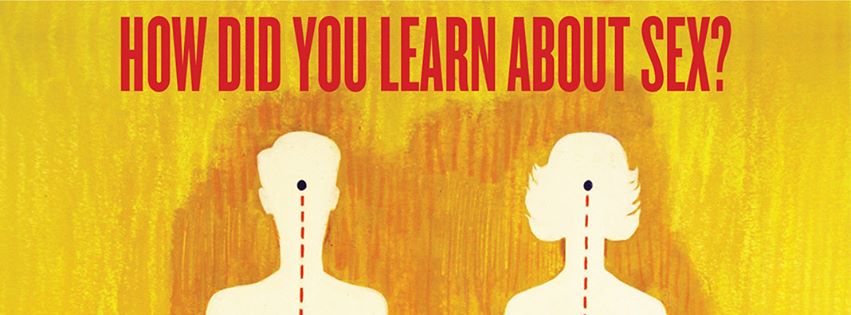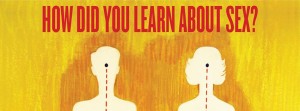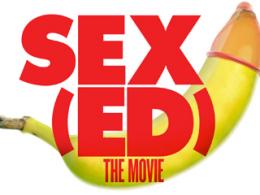Written by Leigh Kolb.
“How did you learn about sex?”
This is a question that can launch us all into stories of our own formative years. I remember my mother–a former home economics teacher–showing me a diagram of the uterus, and factually answering the (many) questions I had, and looking through the textbooks my father–a biology teacher–had strewn around the house. I remember my public elementary school, when in fifth grade girls and boys were separated, and we were taught about periods and given deodorant and pads all wrapped in pastel and hope. A year later, we were separated again, and we girls watched graphic slideshows of STI-ravaged genitals and were given gold plastic purity rings.
Unlike fractions or sentence fragments, our experiences with “official” sex education vary drastically, ranging from helpful, to hilarious, to heartbreaking. Likewise, unlike learning to cook pasta or change a tire, our families’ roles in teaching us about sex are typically not accompanied by cookbooks or users’ manuals. Sex ed in America has historically been the wild west.
Most of us, in recalling our formal sex education, have memories of the film reels shown to us in our pre-pubescent and pubescent school rooms. The history of sex-education films in America is fascinating, and tells us more about ourselves than one might expect. Brenda Goodman‘s documentary, Sex(ed): The Movie shows us a treasure trove of clips from sex-ed films through American history. From early 20th century “hygiene films” and wartime moral panic films, to Disney cartoons and obscure 70s masturbation celebrations, Sex(ed) takes us on a history of not only how we have approached sex ed, but also how we have approached STIs, women, masturbation, menstruation, homosexuality, and relationships. Sex(ed) tells America’s story through archival film clips and in-depth interviews with experts and individuals who have been affected–for better or worse–by their sex education.
Goodman covers a great deal of ground in a concise documentary. She does an excellent job of presenting the clips and interviews with a humanity that is often lacking in the films themselves. The hilarity that ensues from some of the old films is balanced with the tragic weight of anti-gay rhetoric films of the 1960s and the rise of toxic abstinence-only education in the 1990s. The footage could be overwhelming (Goodman analyzed 500 films), but she presents it all in a way that leaves the viewer satisfied but wanting more information–just like a good documentary should.
Watching Sex(ed) is like watching America’s answer to “How did you learn about sex?” What we learn is that what we learn–or don’t learn–can have devastating consequences. We should watch and learn more so that we can more adequately teach future generations about their bodies, sexuality, and relationships. When we answer how we learned about sex, we are also answering how we learned to be human. And as a society, we need to demand better lessons and better answers.
Sex(ed) is available at First Run Features and Amazon.
[youtube_sc url=”https://www.youtube.com/watch?v=Vj1Vl4nWU3g”]
Recommended Reading: “The Dramatic History of American Sex-Ed Films” by Sarah Mirk at Bitch Media
___________________________
Leigh Kolb is a composition, literature, and journalism instructor at a community college in rural Missouri.


